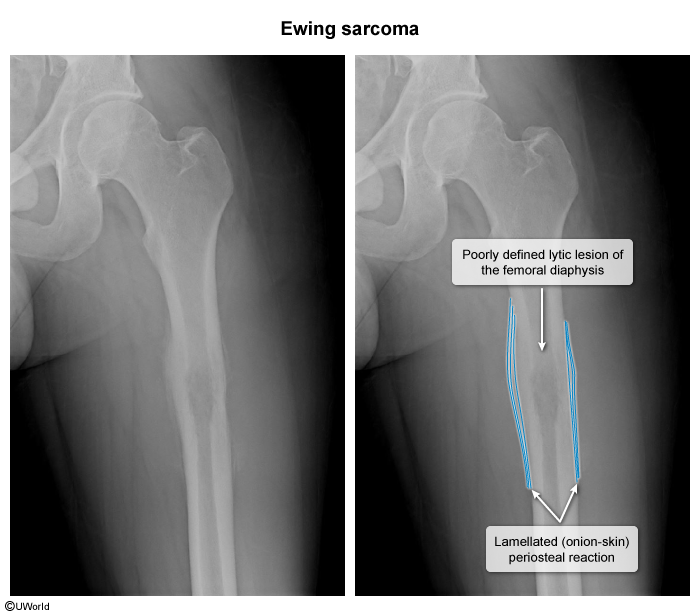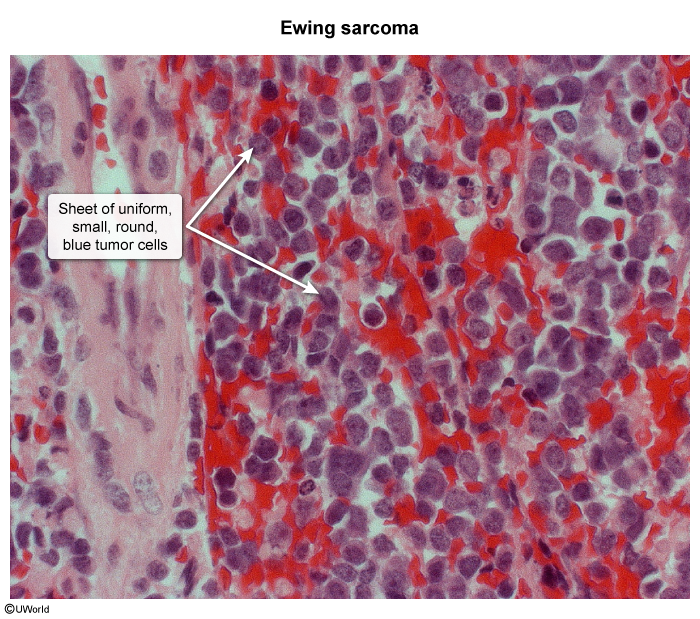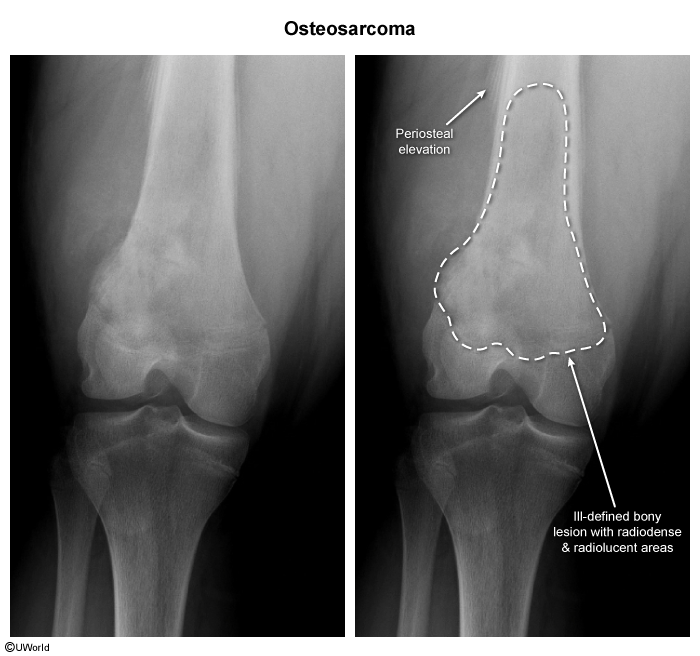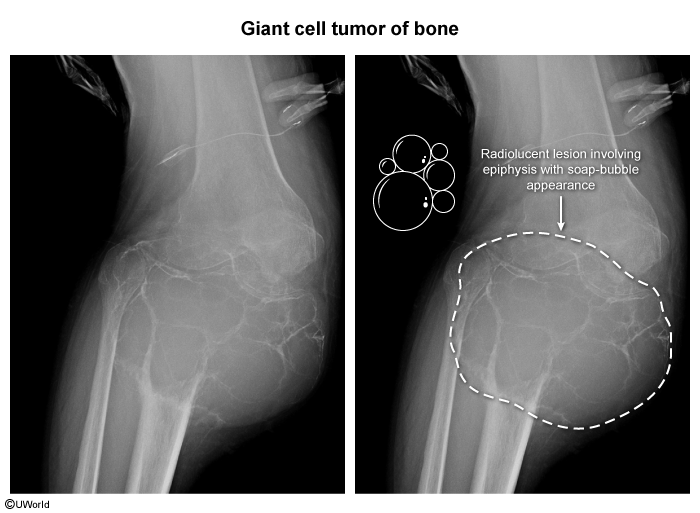Ewing Sarcoma
Article Sections
Introduction
Ewing sarcoma is an aggressive, bony malignancy most often diagnosed in adolescents. It typically affects the long bone diaphyses (Figure 1), pelvis, or axial skeleton. X-ray classically demonstrates a central permeative ("moth-eaten") lesion with a layered ("onion skin") periosteal reaction.
Epidemiology
Ewing sarcoma is the second-most common primary bone malignancy in children (after osteosarcoma), with a peak incidence between ages 10-15. It is rare among adults.
Pathogenesis
Ewing sarcoma is a primitive tumor of unclear origin (likely arising from neuroectodermal or mesenchymal stem cells). Most cases are driven by a translocation involving EWSR1 on chromosome 22 and FLI1 on chromosome 11 (ie, a t(11;22) translocation). This results in a fusion protein that functions as an abnormal transcription factor and leads to uncontrolled cell proliferation.
Continue Learning with UWorld
Get the full Ewing Sarcoma article plus rich visuals, real-world cases, and in-depth insights from medical experts, all available through the UWorld Medical Library.
Figures
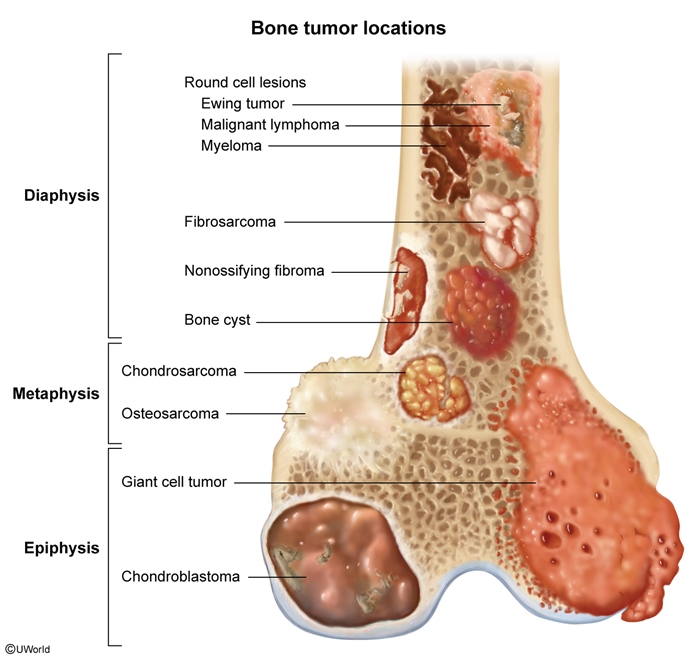
Images
